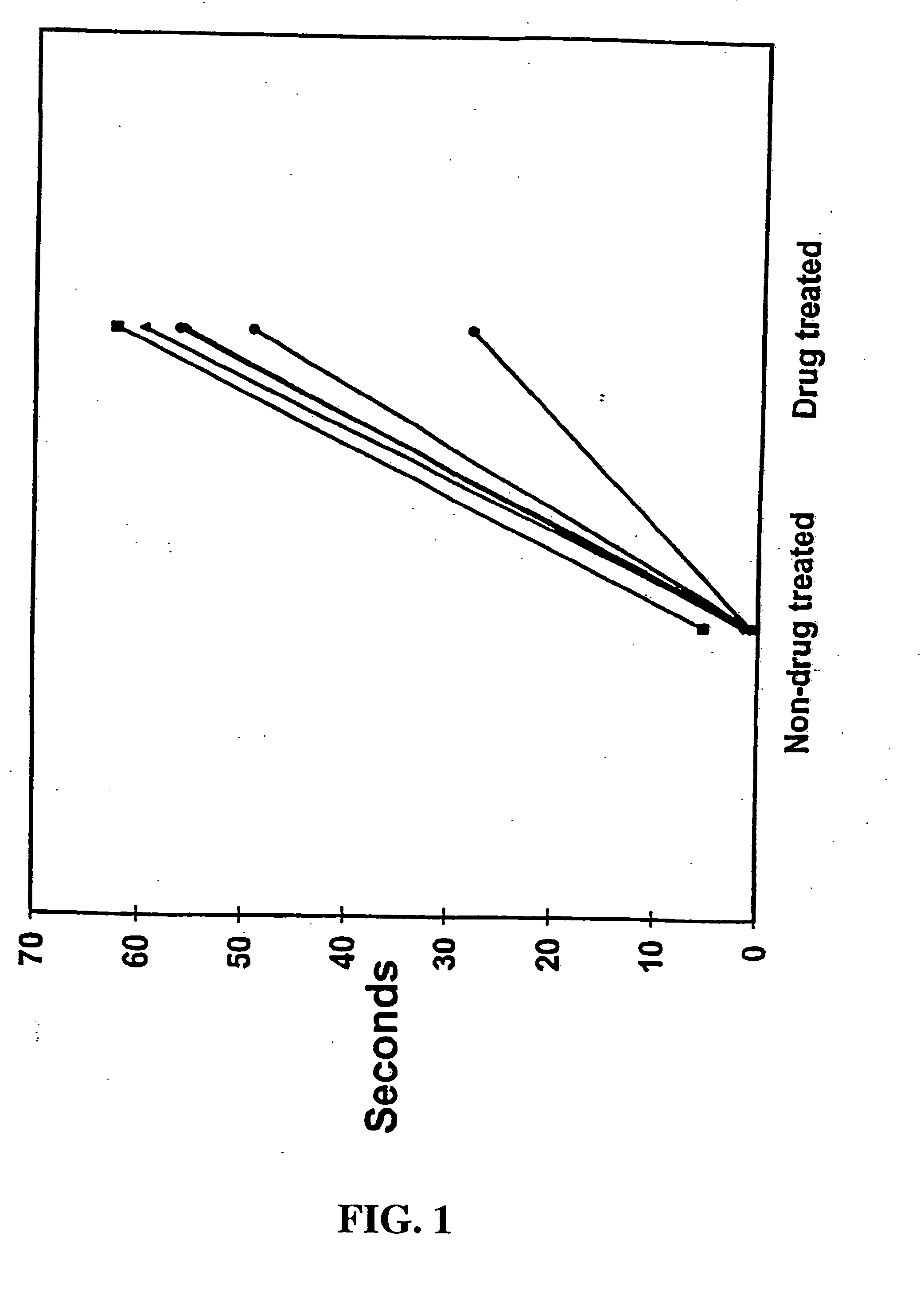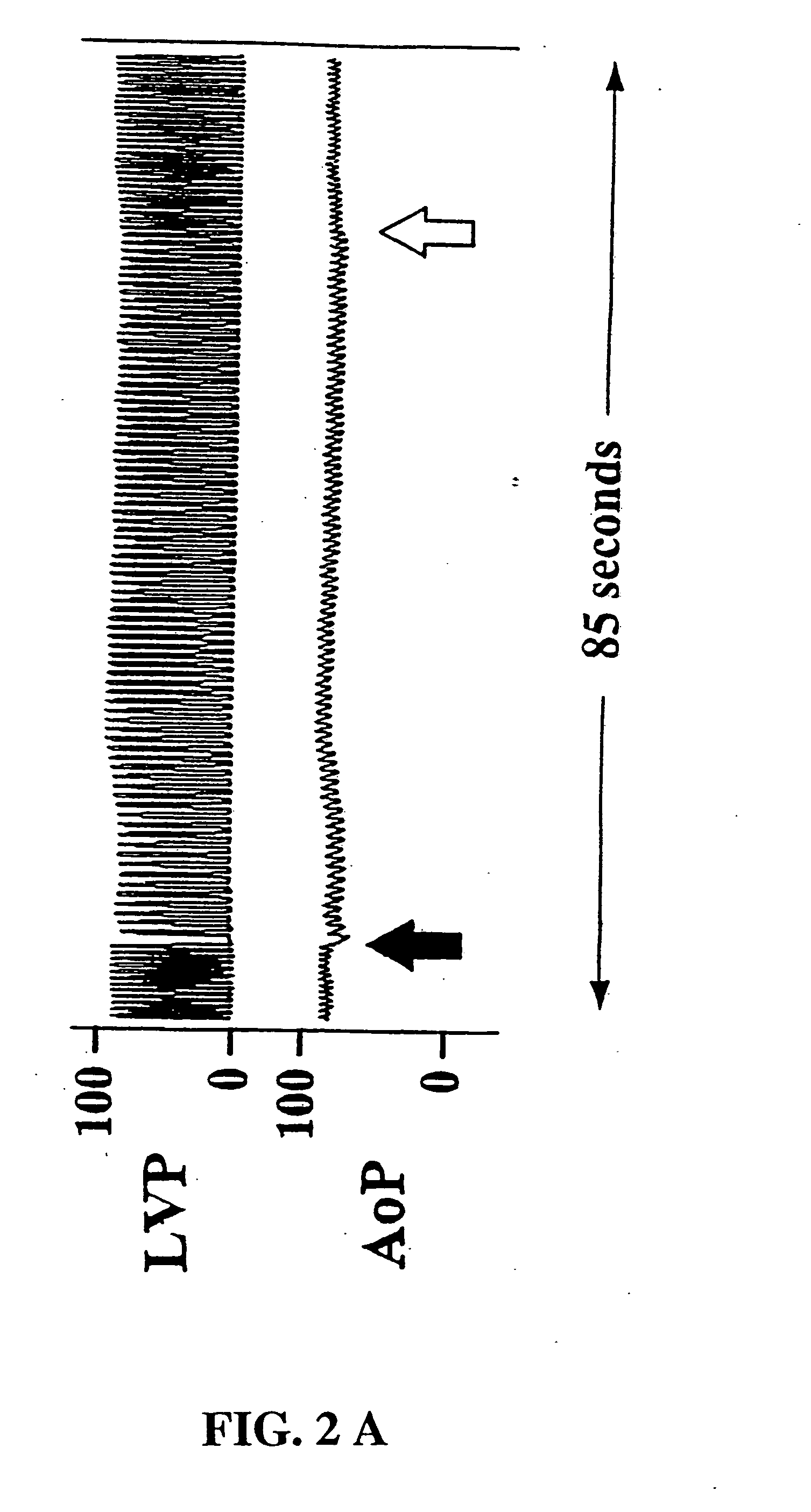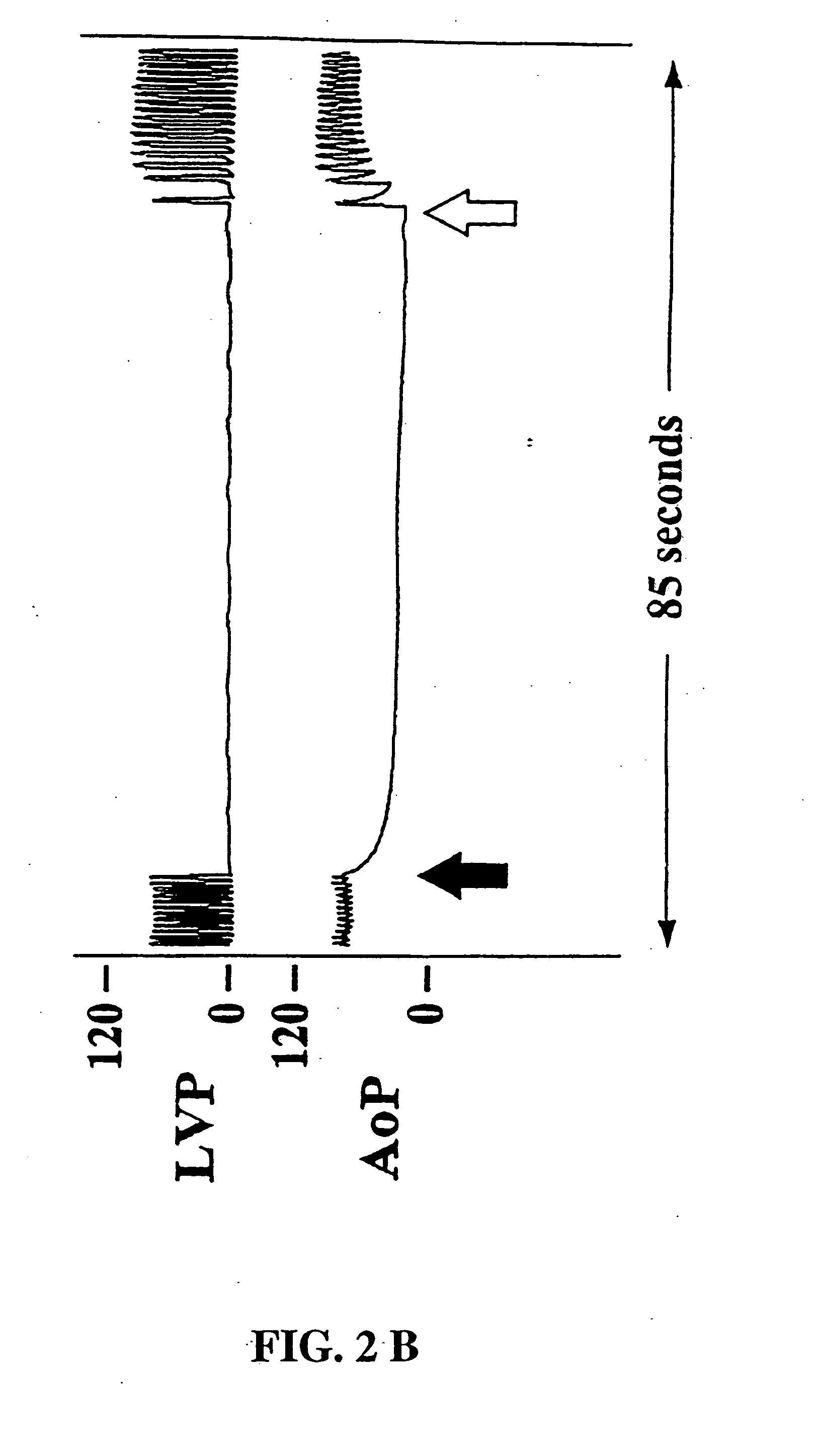Methods of indirectly stimulating the vagus nerve with an electrical field
- Summary
- Abstract
- Description
- Claims
- Application Information
AI Technical Summary
Benefits of technology
Problems solved by technology
Method used
Image
Examples
example 1
Experimental Preparation
[0034] The sheep in the examples of the present invention received humane care in compliance with “Principles of Laboratory Animal Care” formulated by the National Society for Medical Research and the “Guide for Care and Use of Laboratory Animals” prepared by the National Academy of Sciences and published by the National Institutes of Health (NIH Publication No. 80-23, revised 1985). The experimental protocol was approved by the Institutional Animal Care and Use Committee of Emory University.
[0035] Seven sheep weighing 44 to 45 kg were premedicated with xylazine (0.1 mg / kg) and atropine (0.2 mg / kg) 30 minutes prior to induction of anesthesia with intravenous thiopental (2.2 mg / kg) and lidocaine (2.2 mg / kg). The animals were endotracheally intubated and placed on a volume ventilator with isoflurane for maintenance of anesthesia. Limb leads and precordial lead were placed for electrocardiographic monitoring. The right femoral artery was cannulated for arteria...
example 2
Experimental Protocol
[0037] Each animal underwent vagal stimulation before and after drug administration. The pharmacologic regimen consisted of pyridostigmine (0.5 mg / kg) for acetylcholinesterase inhibition, propranolol (80 μg / kg) for β-adrenergic receptor blockade, and verapamil (50 μg / kg) for calcium channel blockade. Vagal stimulation was performed with a nerve stimulator (Grass Instrument Co, Quincy, Mass. ) in the monopolar mode at a frequency of 40 Hz, an impulse duration of 0.4 msec, and an amplitude of 2-6 volts. Vagal stimulations were delivered in two regiments: 1) continuous 60 second impulse and 2) sequential 15 second impulses. The continuous 60 second stimulation was designed to determine the longevity of vagal-induced asystole and the physiologic effects of prolonged vagal-induced hypotension. Sequential 15 second vagal stimulations were performed to simulate the suturing intervals required for graft anastomoses and to determine whether cardiac fatigue, electromecha...
example 3
Data Acquisition and Analysis
[0038] Electrocardiographic and hemodynamic data were gathered via an analog-to-digital conversion board (Data Translation, Inc, Marlboro, Mass.) and processed, stored, and analyzed via a microprocessor personal 486 computer (Compaq Computer Corp, Houston, Tex.) using interactive proprietary software (Spectrum™, Triton Technology, San Diego, Calif.). The system was configured to collect 4 channels of physiologic data at a frequency of 50 Hz (sufficient for slow-wave waveforms and mean pressure data) over a 200 second period that encompassed the 60 second stimulation or the sequential 15 second train of stimulations. The software allowed subsequent videographic display and analysis of the hemodynamic data.
PUM
| Property | Measurement | Unit |
|---|---|---|
| Electric field | aaaaa | aaaaa |
Abstract
Description
Claims
Application Information
 Login to View More
Login to View More - R&D
- Intellectual Property
- Life Sciences
- Materials
- Tech Scout
- Unparalleled Data Quality
- Higher Quality Content
- 60% Fewer Hallucinations
Browse by: Latest US Patents, China's latest patents, Technical Efficacy Thesaurus, Application Domain, Technology Topic, Popular Technical Reports.
© 2025 PatSnap. All rights reserved.Legal|Privacy policy|Modern Slavery Act Transparency Statement|Sitemap|About US| Contact US: help@patsnap.com



